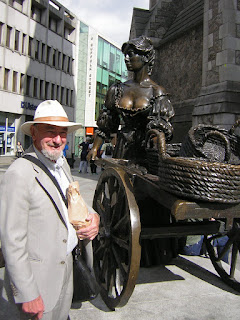 |
| Giorgio De Chirico. Antigone, 1926 |
Stresa,
Italian Alps & Modern Italian Painting.
One of the great surprises of our stay in Stresa on the shore
of lake Maggiore in the Italian Alp was the discovery of a very fine art
gallery. Not only did it stock the usual sweet Italian painting and a fine
selection of art glass and silver, but some paintings by modern Italian
masters.
A fine example of Giorgio De Chirico’s painting titled
‘Antigone’ 1926, from Chirico better
periods the 1920s. As many of you know de Chirico is best associated with
Surrealism, but he was the originator of an art movement  called Metaphysical Painting, a style of imagery were random
object are arranged in a composition stripped of their true meaning. This
approach to art of course was adopted by the Surrealist movement.
called Metaphysical Painting, a style of imagery were random
object are arranged in a composition stripped of their true meaning. This
approach to art of course was adopted by the Surrealist movement.
Another surprise in this lakeside gallery was a work by
Giacomo Bella, one of the leading exponent of Italian Futurism. A movement
interested in depicting aspects of modern industrialized life. That Futurism,
Italy’s contribution to modern art is still freely available was surprising.
Stresa as an alpine tourist town on the shores of Lake
Maggiore is quite delightful to both the eye and pocket. There are several
grand hotels around the lake shore, but plenty of good budget hotels and
backpackers, many with views across the lake. Taken back by first impressions
we decided to stay a few days to explore some of the small villages and towns
scatted around the lake’s edge. One discovery was the Botanic Garden of Villa
Taranto established by Captain Neil McEacharn in the 1930s. He was a Scottish
nobleman of considerable wealth and over the years collected over 20,000 trees
and shrubs from all over the world. Now over ninety years old the gardens offer
wonderful examples of unusual and exotic trees and shrubs.
Another worthwhile outing is the bus trip up to the top of
the mountain raising behind the town to visit the Alpine Garden, a community
project were they collect various alpine trees and plants from around the
world. There are also visits to the islands such as Isola Bell and its castle or
palace.






















